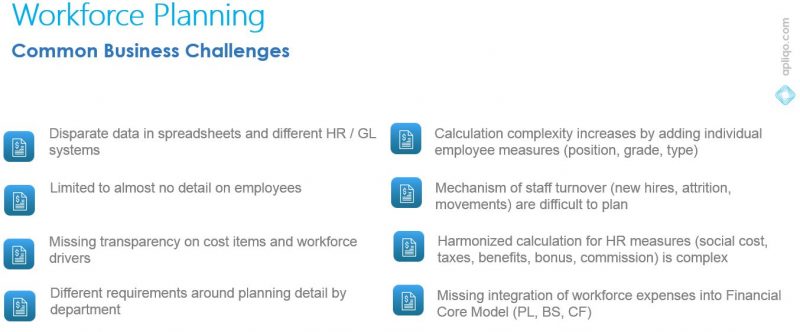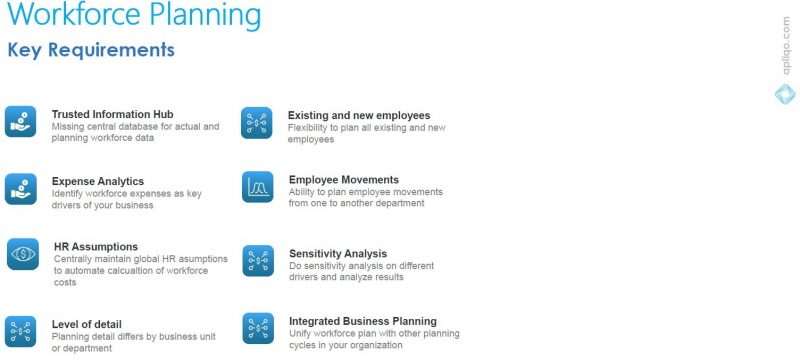Things can become very difficult if the wrong workforce planning decisions are taken, whether because of erroneous calculations or because the overview has been lost. The fact remains: successful workforce planning is a complex matter that is dependent on many factors. In this blog we explain how companies can efficiently and accurately calculate their personnel requirements.
Workforce planning primarily comprises a forecast of the future workforce required to keep the business operational and profitable. This requirement depends on various latent factors: What is the short to long-term workload? What are the short-term growth prospects for the company? What staff shortages (due to illness, vacation, etc.) or seasonal fluctuations can be expected? At what locations should the different teams of employees be based? What are the different employee cost drivers dependent on the different locations and tax jurisdictions? What will be the impact of inflation or general salary increase to the overall salary expenses? The interplay between these factors and the resulting calculations are complex and have a direct impact on the relevant financial figures.
Not something to be handled by Excel
Although most financial and workforce planners are aware of this complexity, they still do not attach enough importance to the coordinated and integrated planning of personnel costs. Many companies also still use Excel spreadsheets that have not been reconciled for this task, which makes it difficult to integrate the different business areas and to obtain a consistent, accurate and transparent overview.
Financial and workforce planners are often confronted by the same challenges:
- Several spreadsheets with different data are in use at the same time;
- The different departments and divisions work with different systems;
- Employee master data are incomplete, inconsistent and relevant data are missing;
- The relevant cost drivers are not transparent;
- The more information is provided about the individual employees, the more confusing the presentation;
- Frequent fluctuations in staff numbers (new appointments, resignations, transfers) test the limits of the system;
- The integrated calculation of personnel costs (salaries, social insurance contributions, taxes, benefits, bonuses, commission, etc.) is very complex;
- Personnel costs are not integrated into the company’s financial core model (income statement, balance sheet, cash flow).
In summary, then: most companies lack an integrated system of workforce planning that can react quickly to changing parameters and is aligned to the company’s overall financial planning.
.

A solution is in sight
Integrated workforce planning is dependent on a central database containing all the relevant and up-to-date data on the employees. This task can be handled by software solutions offering pre-defined applications with a simple feed-in process that collate all the required data in a single trusted hub. The advantage of such tools: they are standardized and make the relevant data, costs and drivers completely transparent to everybody who has access to the tool.

Once the personnel costs have been defined as a key driver for the company, these costs are automatically integrated into all other financial calculations. This allows the unrestricted calculation of workforce requirements across different departments and divisions. The resulting uniform calculations not only improve the accuracy and comparability of the results, but also enable exact simulations and scenario calculations. And this is the beginning and end of successful human resources management.
Would you like to see how the Apliqo Workforce Planning Solution helps you to overcome the common workforce planning challenges?
Click HERE to watch the recorded version of our Webinar on integrated workforce planning.







